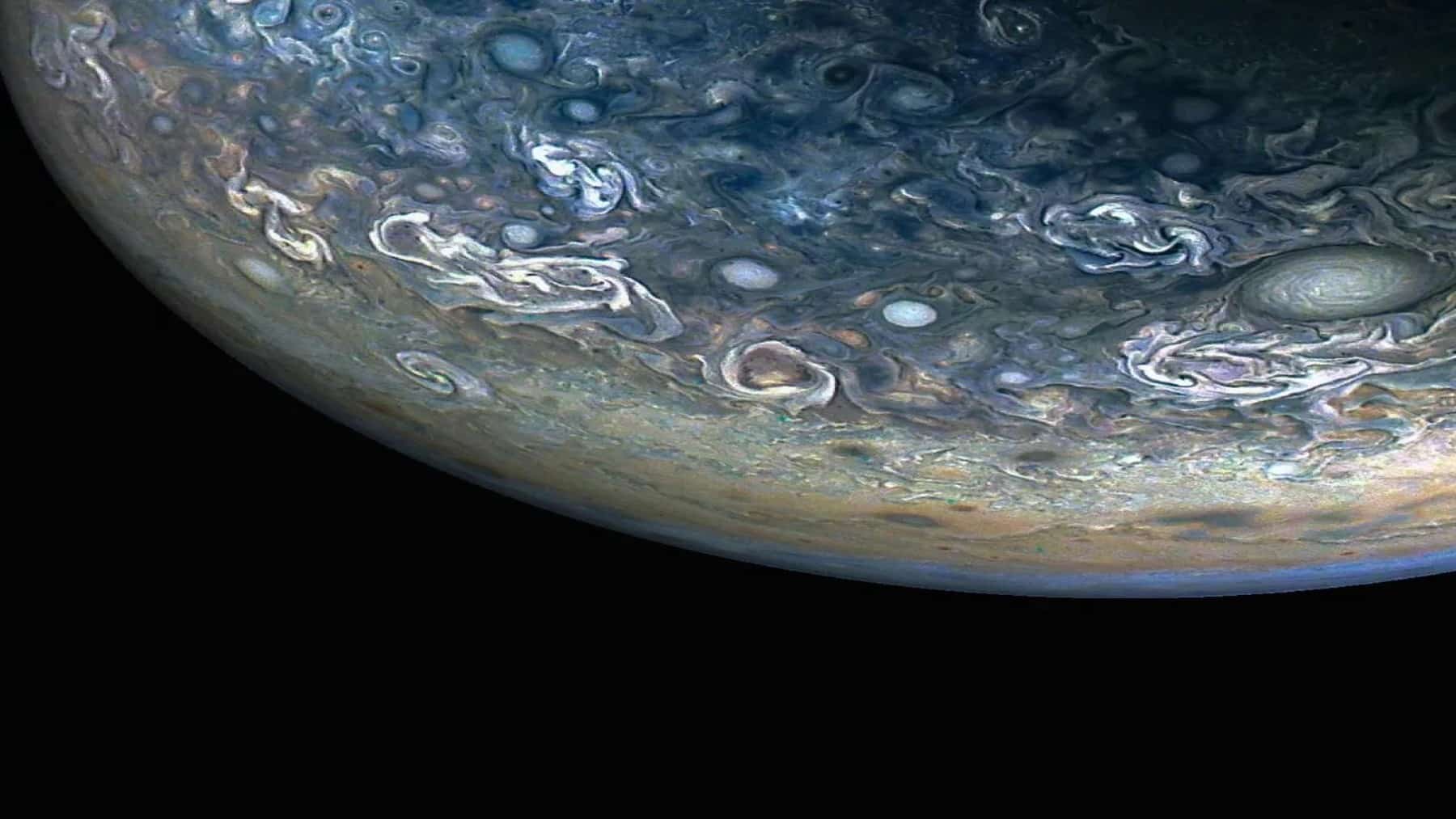Hearing about a ‘planetary war’ on Jupiter sparks serious sci-fi imaginations in the minds of enthusiasts about cosmology. Is this somehow related to what we have seen from Star Wars: The Clone Wars from the award-winning studio Lucasfilm? Or is this a form of title to clickbait an unsuspecting audience? While the latter is incorrect, let’s go into details about this ‘war.’
The build-up of major planetary turbulence
While planetary war does not refer to war in the sense that we know it, the mentioned war is just a clash between eight massive storms raging on the surface of Jupiter very close to the north pole. This particular observation was made from NASA’s Juno spacecraft. It was also reported that it all started as mesmerizing cloud formations and then gradually shifted into an aggressive ring-like arrangement of massive cyclones.
Reasons for such chaotic phenomena
It is a well-known fact that the surface of Jupiter is very dense, and while Jupiter is the largest planet in our solar system, we cannot ignore that it is a victim of rapid rotation, given that the gravitational pull from the sun is also quite small compared to the likes of Earth and Mars.
Each of these storms was also observed to have been spinning furiously near a central polar storm independent of external forces. The sizes of these cyclones are like those of continents and have no similar occurrence in the entire solar system. It is such an interesting phenomenon because, despite all this, there isn’t a single winner among these eight storms. None seem to be wavering anytime soon.
The deduction of enthusiasts is quite different from that of scientists. In the eyes of an enthusiast, this is an amusing and interesting phenomenon, but in the eyes of a seasoned scientist, this is a dynamic mystery, one that has never happened in any of the findings that have been carried out ever since.
Juxtaposing between Earth and Jupiter storms
All the similarities between Earth and Jupiter storms end at rotatory motion. Every other aspect is entirely different. Sure, we could call for some similarities in the fact that both seem destructive, but the storms on Jupiter far supersede the storms on Earth for a lot of reasons.
Earth also has raging hurricanes, but this only spans a few distances and last for at most a week or, in an extreme case, a month. But on Jupiter, the cyclones and hurricanes here can measure up to the size of the United States and can persist for years without showing any signs of slowing down. But recently, these storms have been in a central position, colliding and rotating around each other in a violent motion.
Benefits of learning about these turbulences on Jupiter
Understanding the nature of these gigantic Martian cyclones can pave the way for scientists to understand in a precise manner the current technology in place. These methods, if improved, can be applied to closer planets instead of traveling several light-years into space to monitor farther planets like Jupiter.
If we zoom out, we can further understand that this isn’t even about Jupiter as a planetary body but is more about the future of planetary weather systems as a whole.
In a bid to understand how life works on a planetary scale, there is a clear path we have charted as humans to follow. Sometimes this can be a hit or miss, and sometimes the universe can present something far more consequential. With every discovery that NASA makes (such as recent findings about Venus), we can see that our knowledge about our planetary system will keep evolving, thanks to NASA.
